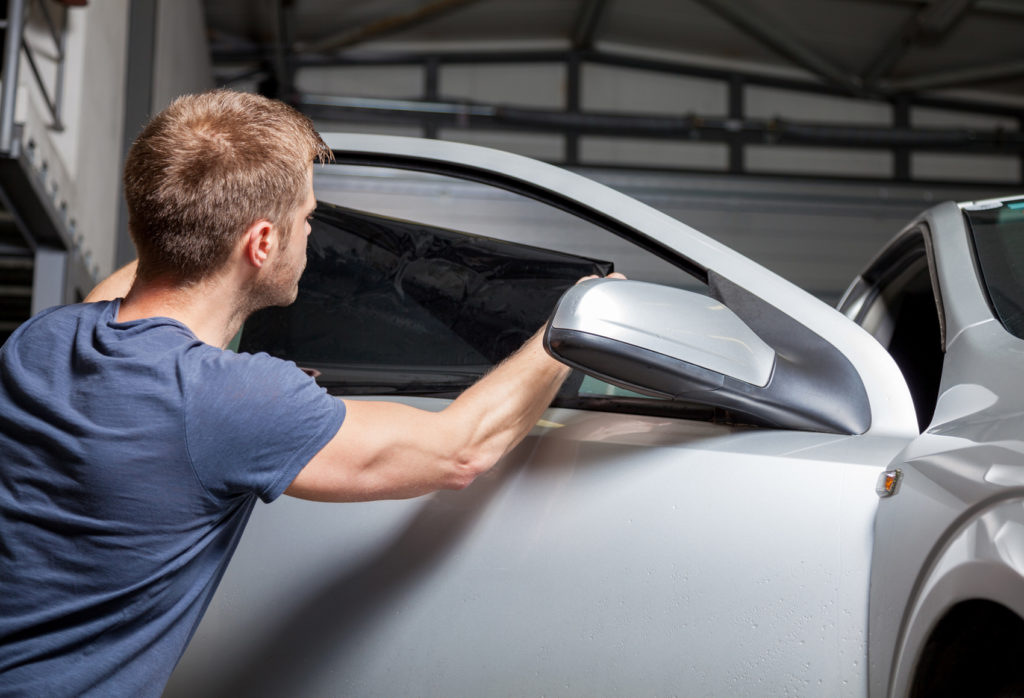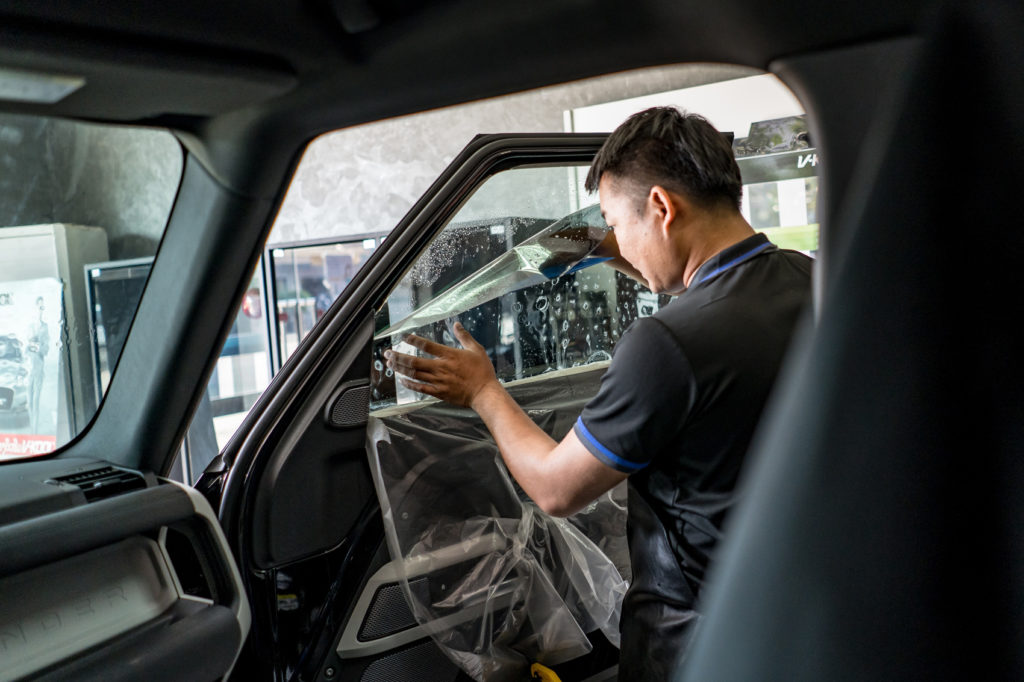Window tinting is an effective way to block a certain amount of sunlight in the cabin while driving. It can also prevent your vehicle’s internal temperature from spiking up, especially during the summer.
Frequently Asked Questions About Tinting Car Windows
Getting your windows tinted is a simple job, and you’ll get all its benefits as long as you keep the answers to the following questions in mind.
What Happens When I Roll My Windows Down Immediately After Tinting?

The friction generated from rolling down the windows could scrape the film from the glass. The film can also slide around or get creases, which are hard to fix. If that happens, you will likely have to replace the entire film.
A clear liner protects the window tint’s adhesive side. This liner is removed when placing the film onto the windows and sprayed down with soapy water for it to stick. It takes some time for the tint to adhere to the glass, which is why you should never roll down the windows immediately after getting them tinted.
When Can You Roll Your Windows Down After Getting Them Tinted?
Most installers would advise you to keep the windows up for two to four days before you can roll them down without any issues. But if you live in a humid or cold area, you might have to wait for five to 10 days because the film will take longer to dry.
Types of Car Tints

When getting your car windows tinted, it’s important to know which type of film suits your preferences best. Take note of the heat resistance capacity of the tint you’re installing as well. There are generally five types of car tint materials: dyed, metalized, hybrid, carbon, and ceramic.
Dyed Tint
This type of tint consists of several layers of dyed film that absorb sunlight. It’s the most affordable and common type of window film. But while Dyed tint comes cheap, it doesn’t offer the same level of UV protection as the other options. It can also fade over time.
Metalized Tint
Unlike dyed tint, metalized tint reflects sunlight using metal microparticles. It’s better than dyed tint at dissipating heat from the cabin, and it helps reinforce the windows. Unfortunately, this type can interfere with radio or GPS signals because of the metal particles.

Hybrid Tint
Hybrid tint is a combination of dyes and metal particles with a thin layer of titanium between them. It reduces the negative effects of both dyed and metalized tints, reducing the mirror-like finish and having less radio interference.
Carbon Tint
Carbon tint consists of carbon fiber particles that don’t fade. Compared to dyed and metalized tints, this type has stronger insulating features and has the capacity to reduce the vehicle’s internal temperature by about 40%.
Ceramic Tint
Ceramic tint is considered the gold standard for automotive tints. This type can block more than 99% of UV rays no matter how light or dark the tint’s shade is. This tint can also cut the car’s internal temperature by half.
Any information provided on this Website is for informational purposes only and is not intended to replace consultation with a professional mechanic. The accuracy and timeliness of the information may change from the time of publication.


















